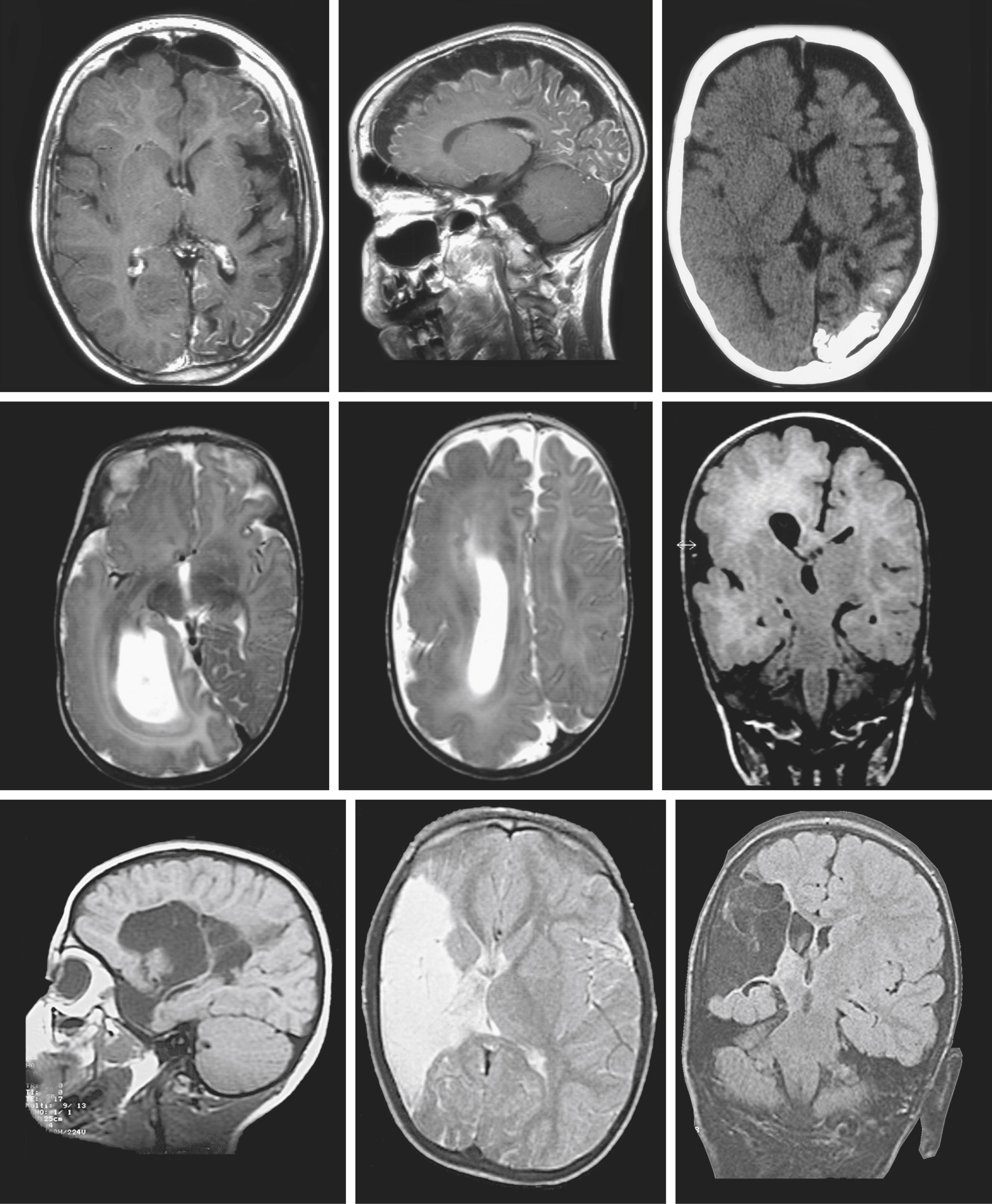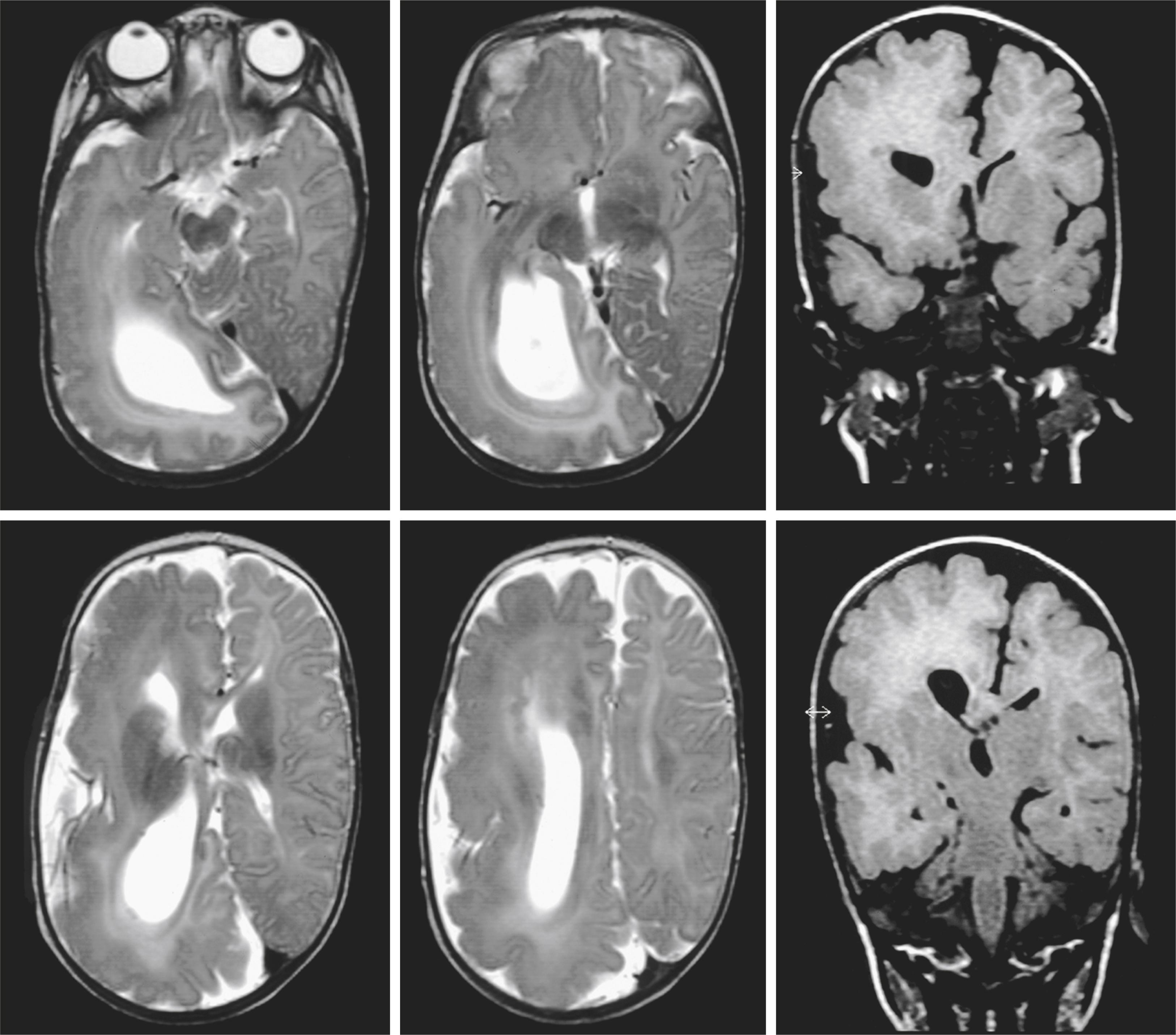Physical Address
304 North Cardinal St.
Dorchester Center, MA 02124
The indication for hemispheric deafferentation is severe hemispheric damage causing drug-resistant epilepsy.
In the past, anatomic hemispherectomy was replaced by functional hemispherectomy.
Functional hemispherectomy has been replaced largely by hemispherotomy.
Hemispherotomy is a disconnection of the cortical mantle from the basal ganglia bloc.
In hemispherotomy, resection of brain tissue has been largely replaced by disconnection.
Three common techniques available for hemispheric disconnection are disconnection via an opercular window, the transsylvian keyhole approach, and dorsal vertical transventricular disconnection.
Hemispherotomy advantages over anatomic and functional hemispherectomy include shorter surgery duration and much less loss of blood.
Hemispheric disconnection procedures are a group of surgical interventions for chronic epilepsy that are used as alternatives to anatomic hemispherectomy. The common denominator among these procedures is the disconnection of the cortex of one hemisphere from the contralateral hemisphere and from the deeper structures of the basal ganglia. The term hemispherotomy is commonly used as an alternative expression. The terms hemispheric deafferentation and hemispherotomy imply that most of the hemispheric tissue is not removed, whereas hemicorticectomy or hemidecortication disconnect by removal of all hemispheric cortex.
The first anatomic hemispherectomy was done for glioma surgery by Dandy in 1928, and Krynauw performed the first resection for drug-resistant epilepsy in 1950. After a period of increased use of anatomic hemispherectomy in the 1960s and 1970s to control devastating childhood epilepsies, a high rate of late complications was described, such as superficial cerebral hemosiderosis (SCH), occlusion of the foramen of Monro and aqueduct, development of hydrocephalus and its complications, and even fatal outcomes. In 27 anatomic hemispherectomies performed in Montreal from 1952 to 1968 with long-term follow-up, hydrocephalus developed in 52% of patients, 33% from SCH and 19% from other causes. Three of nine patients with SCH died of hydrocephalus. SCH is thought to be caused by recurrent minor intracranial bleeding in the large cavity as a result of the resection surgery. Deaths occurred in the early years of this operation owing to unrecognized hydrocephalus, before the advent of CT imaging.
Because of the considerable mortality from these complications, the use of anatomic hemispherectomy decreased until the 1970s, when Rasmussen described an alternative technique based on the observation that in patients with multilobectomies these complications did not occur. Rasmussen’s functional hemispherectomy was a change from anatomic hemispherectomy. The operation included the removal of two larger brain segments (the temporal lobe and an en bloc resection of the central cortex in the suprasylvian location), combined with callosotomy and disconnection of the frontal, parietal, and occipital lobes. Although the hemisphere as such was not totally removed, the effect of this surgery is functionally equivalent to total hemispherectomy. It makes sense to limit use of the term functional hemispherectomy to Rasmussen’s and Mathern’s techniques. The latter consists of a large central peri-insular resection, including the basal ganglia and the temporal lobe, combined with disconnection of the frontal, parietal, and occipital lobes.
Because the frontal lobe and the parieto-occipital lobe are left in situ, a lower incidence of hydrocephalus and hemosiderosis was found by longitudinal follow-up. Rasmussen demonstrated in his patient series that seizure-free outcome rates after anatomic and functional hemispherectomies were very similar—83% and 85%, respectively—but the rate of complications from increased intracranial pressure was reduced from 35% to 7%. A lower rate of SCH has been reported for functional hemispherectomy techniques after a follow-up of 20 years.
The modern transition to nearly exclusively disconnective techniques started in 1992 after a brief description of two distinct approaches developed independently by Schramm, Delalande, and their colleagues. , This was followed in the mid-1990s by the first series of patients treated via perisylvian techniques. , Closely related to Villemure’s technique is a variation of a perisylvian resective approach by Shimizu and Maehara. Among the disconnective procedures, the technique by Delalande and associates (vertical parasagittal hemispherotomy) and the transsylvian transventricular keyhole procedures include minimal tissue removal and mostly consist of disconnections. The change to less resective procedures during the past 15 years is continuing at many centers, and a number of reports have confirmed the initial results indicating that disconnection procedures are associated with shorter operative time, less blood loss, fewer intraoperative complications, and possibly a lower rate of hydrocephalus.
Because anatomic hemispherectomy, functional hemispherectomy, hemispherotomy, and hemispheric deafferentation are effective, all are established and successful methods used to treat drug-resistant epilepsy resulting from diffuse damage to one hemisphere. Such damage is usually associated with hemiparesis, hemianopia, and, frequently, delayed cognitive development. The indications for surgery, selection of patients, and timing are similar for all variants of these procedures.
The diagnoses typical in these patients may be grouped into inborn, perinatal, or acquired conditions ( Table 99.1 ) and include Sturge-Weber syndrome (SWS), developmental defects (multilobar cortical dysplasia, polymicrogyria, lissencephaly, hemimegalencephaly (HME), cystic defects from intrauterine or perinatal infarction or hemorrhage, and hemiplegia-hemiconvulsion-epilepsy syndrome (HHE) ( Fig. 99.1 ). Rasmussen encephalitis leads to hemiatrophy, which may also be posttraumatic, postencephalitic, or of unknown origin. The epilepsy syndromes associated with these lesions may include several seizure types occurring with different frequencies. Patients can have up to hundreds of seizures per day or focal status epilepticus (i.e., epilepsia partialis continua, typical of Rasmussen encephalitis).
| Infarct, ischemia, porencephaly | 54 |
| Cortical dysplasia, migration disorders | 10 |
| Hemimegalencephaly | 12 |
| Sturge-Weber syndrome | 6 |
| Rasmussen encephalitis | 15 |
| Hemiatrophy, unclear cause | 7 |
| Postencephalitic, HHE, or other | 6 |
| Total | 110 |

Patients with HME usually have an enlarged hemisphere displaying different features of abnormal architecture. Parts of the ventricle may be enlarged, whereas others may be compressed by abnormal brain tissue. There may be pachygyria, polymicrogyria, grossly enlarged gyri, and areas of ectopic gray matter around the ventricle in the white matter ![]() ( eFig. 99.1 ). The cause is commonly a neuronal migration disorder. HME is often associated with seizures that are frequent and intractable. The hemiparesis can be mild or pronounced, and a marked degree of mental retardation is usually present.
( eFig. 99.1 ). The cause is commonly a neuronal migration disorder. HME is often associated with seizures that are frequent and intractable. The hemiparesis can be mild or pronounced, and a marked degree of mental retardation is usually present.

SWS is a rare congenital disorder with a variable natural history. Its characteristic feature is leptomeningeal angiomatosis, and in a proportion of cases it is associated with a facial nevus, the latter variant occasionally described as encephalotrigeminal angiomatosis. The clinical syndrome is characterized by a progressive neurological disorder consisting of epilepsy, cortical calcifications, cerebral atrophy, and, if the epilepsy is untreatable, frequently the development of mental retardation. Seizures usually develop by the end of the first year and may respond to medical treatment initially, but often become resistant to drugs. The cerebral manifestations generally involve the occipital or parietal cortex, or both, but the entire cortex or large parts of it may be involved; however, the pathologic changes remain restricted to one hemisphere. Epilepsy surgery should be considered for patients with refractory seizures, but one has to differentiate between the need for hemispheric deafferentation and a multilobar or more restricted resection. Children with widespread hemispheric involvement are classic candidates for hemispheric deafferentation. The results from three multicenter series have been reported. Seizure-free rates after hemispherotomy were reported to be 100% in eight, six, and five patients. , , In three larger series, rates of 80% to 82% were reported in 12, 28, and 70 patients. , ,
The pathophysiology of Rasmussen encephalitis is not well understood. The clinical syndrome is characterized by intractable epilepsy and progressive hemiparesis inexorably resulting in hemiplegia, mental decline, and hemispheric atrophy. The median age at onset in a multicenter study of 16 patients was 4.2 years with a range of 2 to 11 years. Most of the brain damage occurs during the first 8 to 12 months. Progression to hemiplegia or aphasia (or to both) and finally cognitive decline occur invariably. The seizure disorder may begin with generalized seizures, but focal seizures are most frequent, and epilepsia partialis continua develops in a large proportion of patients. A characteristic imaging finding is perisylvian atrophy and encephalomalacia, and histologic findings typically include a perivascular infiltrate of T lymphocytes, which is associated with destruction of neurons. Once the diagnosis is suspected, the progressive atrophy can be characterized by serial MRI. These patients are classic candidates for hemispheric deafferentation, but the decision regarding timing of surgery can be a difficult one.
The decision to perform hemispherotomy is straightforward for unihemispheric lesions that are either inborn or occurred around the time of birth and manifested during infancy or early childhood as frequent and intractable seizures. Hemispherotomy is also indicated for small infants with so-called catastrophic epilepsy, manifesting early after birth, usually from severe hemispheric damage or an inborn malformation in which lengthy drug treatment is known to be unsuccessful. The procedure is also performed in adults with good seizure-freedom rates.
How is it possible to have a functional existence after such a procedure? The disconnection is performed on a mostly nonfunctional or partly destroyed hemisphere, where language and motor function either have been or will be transferred to the other hemisphere, as is the rule if the damage occurred during the intrauterine period or perinatally. These patients typically already have spastic hemiparesis, and although the procedure nearly always results in loss of fine motor control of the hand and occasionally deterioration of gait, the majority of patients are able to walk and even use their arm and hand to a certain degree. ,
Become a Clinical Tree membership for Full access and enjoy Unlimited articles
If you are a member. Log in here